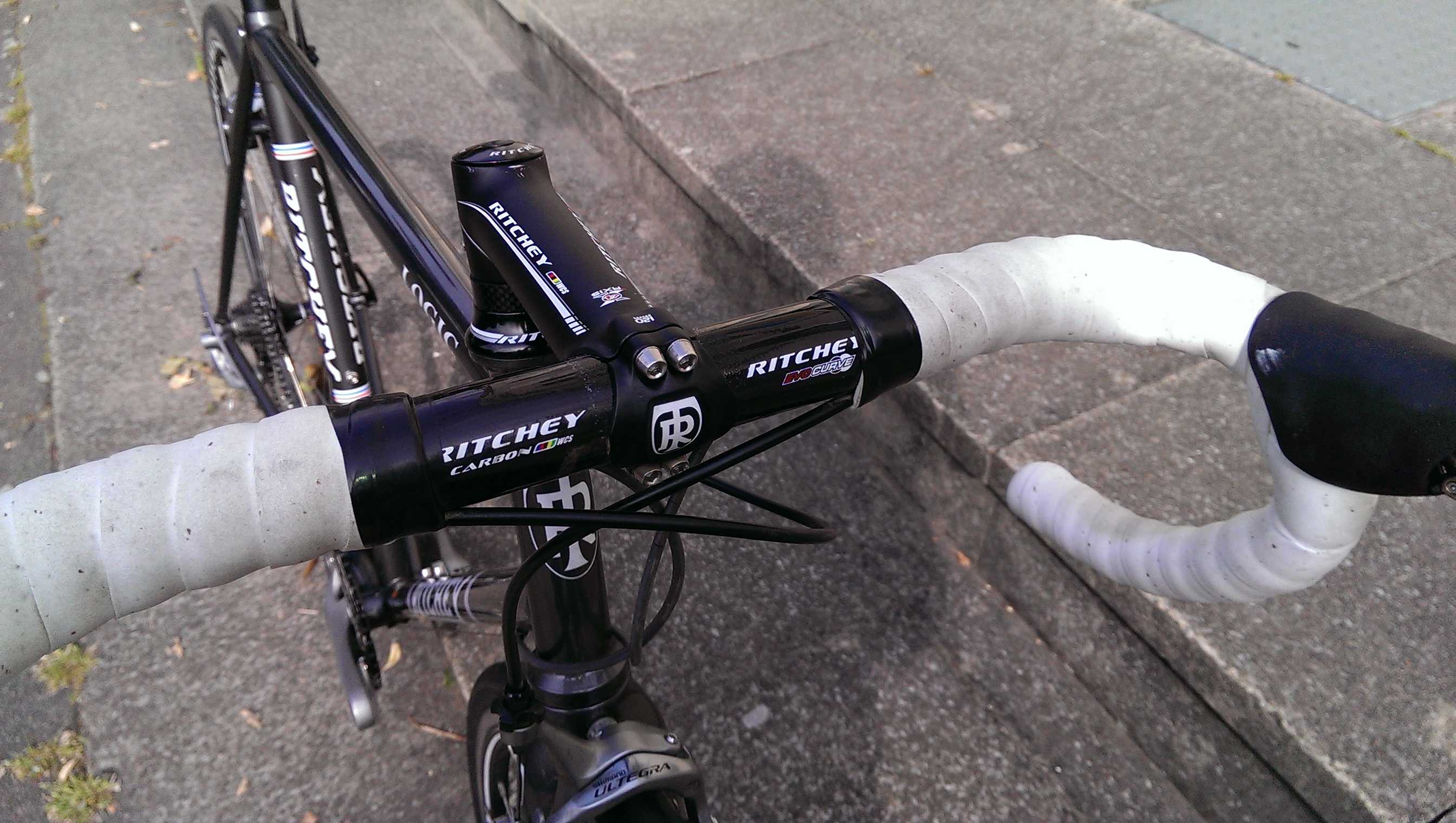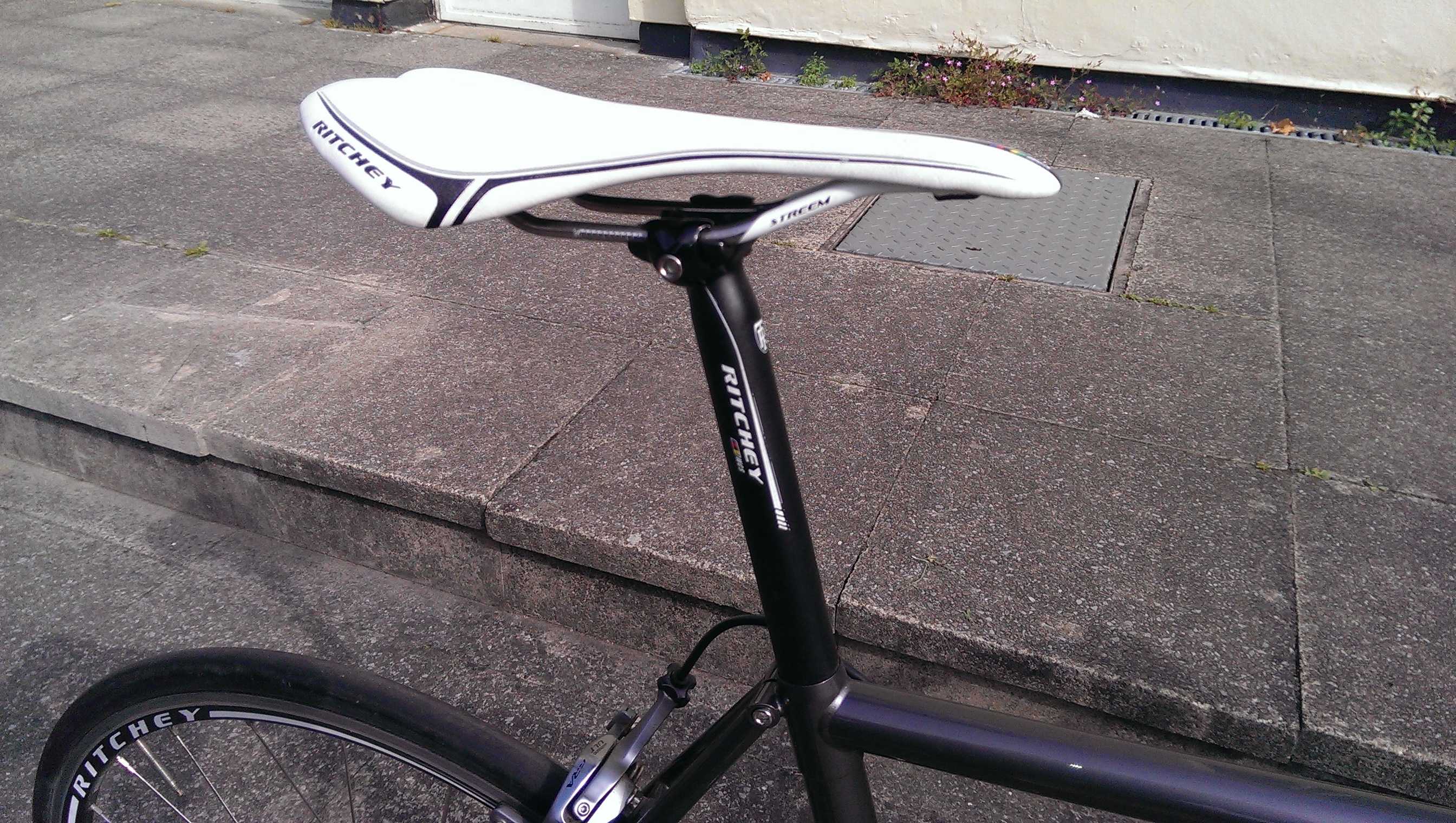Ritchey Road Logic
Riding The Ritchey Road Logic
Steel should be refined by now. 128 years of frame development and 100s of millions of bikes later, the Ritchey Logic’s behavior confirms that steel is at the apex of its development. The difference in performance was most noticeable when I stepped off my carbon wonder bike and onto the Ritchey mid-ride. It’s not just the big things that I’ll cover in a moment, but also subtle qualities. This bike is quiet; gravel bounces of the frame with a quiet “ting” rather than a hollow thump and road noise doesn’t echo through the frame the same way it does with carbon. Over long periods in the saddle, the bike is more relaxed for this silence, like a well-insulated Aston Martin rather than a stripped out Ferrari.
During epic rides, something that Coppi and Bartali would be proud of, the bike really shines. My first long ride on the bike was to be through leafy Surrey, a trek that looped down to Dorking to include several steep single lane climbs and then traversed 10 miles of dirt tracks, all topped off with slick, cold conditions. I slapped on a pair of 3-cross, 32 hole wheels with some 700×28 tires, bundled myself into some thermal clothing, and set off in just about 0 degree weather.
As I cruised through Richmond Park, I noticed the supple qualities steel frames are known for. In the saddle, the frame dampens road shocks and vibrations and the generous top tube allows the rider to stretch out comfortably. I found myself grasping my bars lightly and relaxing my shoulders more than when riding my carbon bike. Spinning out of downtown London, trading buildings for hedges, the roads began to roll a little more. Bounding over the hills out of Epsom, I noticed a pleasant springy quality to the frame out of the saddle, the bottom bracket was not unyielding, but rather flexed slightly under hard effort. This accommodation made the bike feel more alive, less harsh. This may not be the perfect machine for riders with massive 5 second watt numbers, but it’s very pleasant to ride on extended terrain. As I closed in on Dorking, I tackled a sharp descent into town. The Ritchey is an extremely stable, comfortable bike on sweeping descents. Hands off the bars at 30-35 mph showed no wobble or other bad behaviour.
About half way into my ride, I turned onto a dirt – well mud – track for a few miles of mixed condition riding. The Ritchey really began to shine when the conditions became more interesting. The large tyres, easily accommodated by the significant clearance afforded by the rear triangle and fork, kept me well cushioned while the frame and fork kept me comfortable over the bumpy terrain. It’s no surprise steel frames were still used in the professional peloton at Paris-Roubaix well into the late 2000s; they are tough, but as the Ritchey showed on the much shorter burst over this British track in April, also extremely comfortable. I was impressed by the Ritchey as a bike for hard training in varied conditions, but how would it be at the races?
Racing The Ritchey Road Logic
Steel is experiencing a resurgence in racing circles in 2013; both the Madison-Genesis and the Rapha-Condor teams are racing steel bikes this year. I pinned some numbers on to see get some race impressions of my own.
[rps-include blog=127.0.0.1 post=30120]








1 Response
[…] Ritchey Road Logic […]